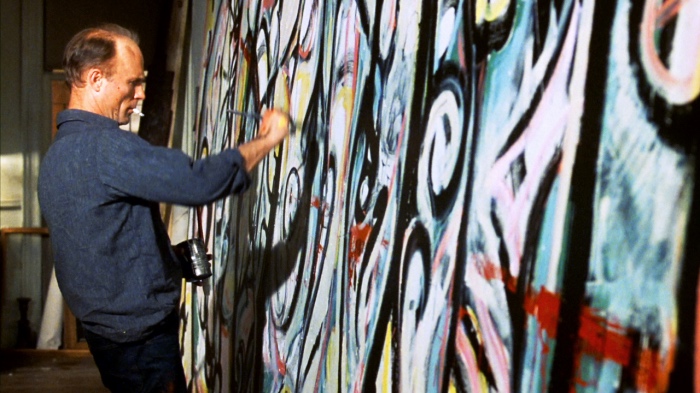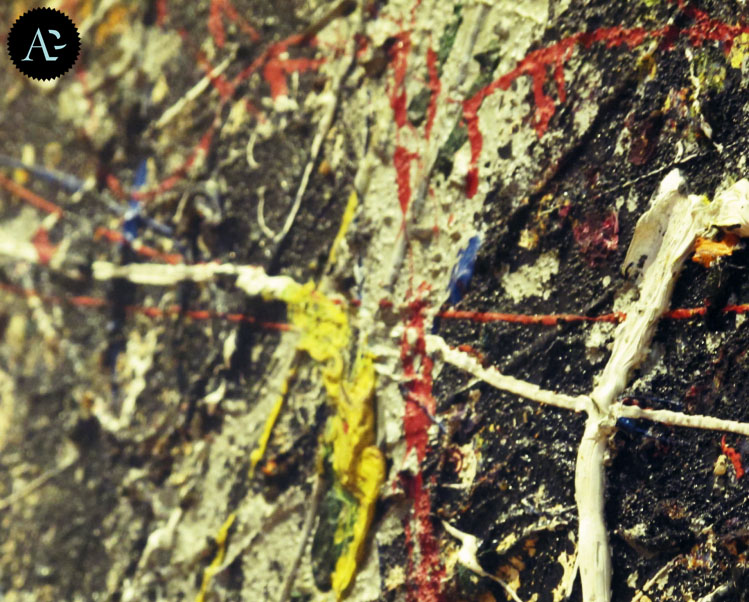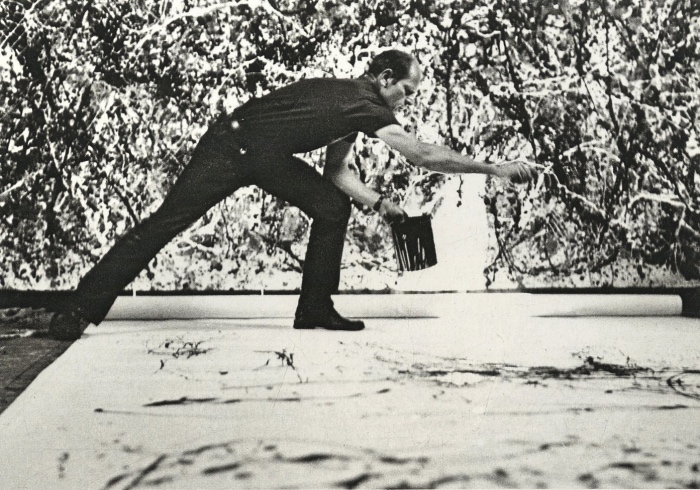
Have you ever thought about the connection between the torments of history and the metamorphosis of art?
To understand what Abstract Expressionism is is to immerse oneself in history and understand how art tried to tell the story of life.
Celebrated as the New York School, Abstract Expressionism is a child of the chaos of the War that took shape in the late 1940s. The global devastation wrought by World War II not only changed the geography of the world, but also the human mind, causing an artistic revolution.
From Chaos to Canvas: What is Abstract Expressionism?

Pollock, Alchimia
The artists of Abstract Expressionism, faced with the crossroads that led to Chaos on one side and Hope on the other, found refuge in the canvas and theorised that the human unconscious was the key to a new artistic dimension.
Through brushstrokes and colours, they embarked on a journey to explore aesthetics, emotion and philosophy, thus ushering in a new era of art.
ABSTRACT EXPRESSIONISM, THEMES AND ARTISTS
The social turmoil that followed the war deeply shook the art world. Many artists felt disoriented and this feeling of uncertainty fuelled the conviction that a new art form was needed to reflect the post-war human condition.
Many European artists moved to the United States, merging their European artistic heritage with that of American artists. The artistic and cultural centre of the world moved from Paris to New York, marking a new dawn for modern art.
Abstract expressionist artists adopted a strongly introspective approach to artistic creation. They believed that exploring unconscious emotions and abandoning realistic expression was the path to a new art form.
The world initially did not understand artists like Jackson Pollock, who did not paint but dripped paint onto the canvas, but with time his works gained a prominent position in the art scene.
Abstract Expressionism was not concerned with depicting reality but rather focused on the fundamental elements of art such as line, shape and colour, avoiding concrete representations of the physical world. However, artists such as Willem de Kooning often depicted female figures, showing a different interpretation of the movement.
Jackson Pollock and Willem de Kooning were both masters of gestural painting. In this art form, brushstrokes were vibrant and energetic, and Pollock, in particular, required considerable physical energy, placing the canvas on the floor while dripping or throwing paint, creating works of monumental dimensions that occupied entire museum walls.
Pollock’s Mural, commissioned by Peggy Guggenheim in 1943, is one of the most representative works in this respect. However, Alchemy, although smaller in size, also provides an insight into the technique and deeper meaning of his work.

Pollock al lavoro nel suo studio
Abstract Expressionism was not just an artistic movement, but a reflection of a troubled age and its incessant search for meaning. The canvas became a terrain on which artists could sow their anxieties, hopes and ongoing investigation into human existence. Transporting art beyond the confines of realism, the Abstract Expressionists opened the door to a deeper dialogue between the viewer and the work, inviting each person to carefully observe the layers of colour, form and emotion to find a personal resonance.
Abstract Expressionism, with its raw emotionality and bold aesthetic exploration, reminds us that art is an endless journey, an open dialogue between the artist and the viewer, and above all, an ongoing reflection of the human condition.

